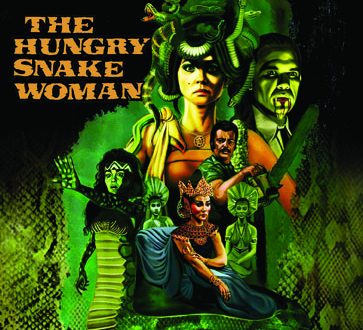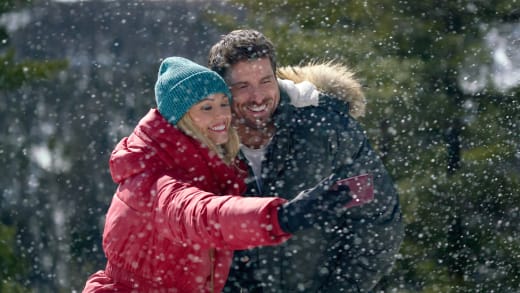Despite how prevalent they are in spooky media, you’d be surprised at how rare it used to be for traditionally recognizable witches to be the main antagonists in scary movies. Sure, we got the eerie crones of the pseudo-documentary Haxan and even a dancing coven in Suspiria, but for the longest time, witches were relegated to humorous stereotypes akin to the Sanderson Sisters rather than anything truly terrifying. It’s only recently that modern classics like The Witch and Gretel and Hansel have made potions and broomsticks scary again, revisiting the disturbing origins of these myths in ways that genre films of the 20th century simply couldn’t handle.
There are a few exceptions to this rule, however, and one of my favorites just so happens to be a bizarre trilogy that dared to ask what would happen if a potion-brewing maniac from the early days of America found himself transported to modern times. Naturally, I’m referring to the Warlock series, an underrated yet barely connected trilogy that feels like the bizarre love-child of Wishmaster and Roald Dahl’s The Witches. And in honor of the late, great Julian Sands, I’d like to take a look back on these weird films beginning with the one that started it all.
Funnily enough, writer David Twohy originally envisioned the script as a parable about the horrors of persecution, with the first version of the Warlock being a well-intentioned victim of the 17th century witch hunts who travels through time and still finds himself being persecuted by intolerant puritans in the 1980s. After a couple of months trying to make the story work, Twohy scrapped that idea and turned the script into a more easily marketable horror flick with toned down effects sequences.
With Friday the 13th Part 2 and III’s Steve Miner directing and producing the project, the finished Warlock ended up feeling like a unique mix of dark fantasy and slasher, embracing the sillier aspects of classic witchcraft lore (like having to hold pennies in your mouth to protect yourself from satanic charms) while also featuring some unexpectedly cruel violence.

Witch toes give them their strength – or so I’ve heard.
If you’ve never seen the film before, Richard E. Grant plays Giles Redferne, a 1690s Witch-hunter who has finally apprehended a fearsome Warlock (Julian Sands) and intends to see him executed. Unfortunately, Satan has other plans for this dark magician, sending him and his pursuer forward through time to 1980s L.A. Once there, Redferne must team up with the cursed waitress Kassandra (Lori Singer) to stop the Warlock before he can unite the three pieces of a satanic bible and undo all of creation.
On paper, this action-packed premise sounds a lot more like a blockbuster fantasy flick along the lines of Highlander, but the film’s limited budget and affinity for surprising moments of gore help to keep things firmly rooted in the horror genre. That being said, many of the story’s more magical elements ended up on the cutting room floor due to negative test audience reactions and a limited budget – which is likely why the flick feels so grounded despite the fantastical setup.
Of course, what really makes the film work is its charmingly over-qualified cast and the chemistry between them. While Grant and Sands were originally competing for opposite roles before the director decided to cast them against type, I simply can’t imagine a version of this movie where Sands doesn’t get the opportunity to chew up the scenery like a bona fide supervillain as Grant hunts him down like a Scottish Ahab (all the while welding a very Belmont-family-esque whip).
As if that wasn’t enough, Lori Singer is much more than a damsel in distress here, with her snarky Californian personality being the perfect foil for Grant’s revenge-obsessed puritan. In fact, some of the best scenes involve “Kassandra with a K” learning to get along with Giles’ seemingly primitive ways while also dealing with the curse that’s rapidly aging her to death. Their connection may not quite warrant the romantic beats towards the end of the flick, but I still thought it was surprisingly funny and heartwarming for a scary movie.
Regardless, no one is going to watch a movie named Warlock because of its romantic comedy elements, and I’m happy to say that Miner’s film really lives up to its name when it comes to dark sorcery. From creative uses of familiar magic like the Evil Eye to bizarre witch-hunting techniques like hammering iron nails into footprints, there’s plenty of period-accurate lore to entertain witchcraft enthusiasts.

A tale as old as time.
Fortunately, it’s not all fun and games here, with the film also boasting some seriously creepy moments courtesy of Sands knowing exactly when to dial his performance down to a more believable level of evil. The scene where the Warlock converses with an unbaptized child while being questioned about witchy clichés is especially chilling once you realize the villain’s true intentions – even if the ensuing flight effects aren’t all that impressive.
In fact, this scene was so impactful that it was actually part of a real-life court case, with the film allegedly inspiring a Canadian teenager to murder a seven-year-old child in order to concoct his own flying potion. However, even a cursory glance at Warlock’s laughable wirework and darkly comedic tone should be enough to convince you that this terrible tragedy had much more to do with undiagnosed mental illness than the horror genre inspiring acts of violence – though that didn’t stop the Canadian government from accusing Warlock and other similar films of corrupting the nation’s youth in an ironic witch hunt of their own.
And on the subject of shoddy special effects, this was actually a common point of criticism by reviewers at the time. Several media outlets unfairly compared Warlock to 1986’s The Terminator, which had an even lower budget, and claimed that the poor effects work kept them from taking the story seriously. While most of these issues can be explained by fussy actors (Singer is reported to have refused aging prosthetics once filming began) and the fact that the effects company failed to provide a supervisor during shooting, I’d argue that some of the makeup and rotoscoping actually make this flick feel even more charming now that theaters are dominated by CGI-heavy blockbusters.
Warlock isn’t exactly a masterpiece, featuring some unintentionally humorous old-timey dialogue and visuals that range from “serviceable” to “what were they thinking?” but there’s no denying the passion at the heart of this bizarre road-trip/fantasy/horror hybrid. Recent years may have gifted us with more compelling witchcraft-themed films, but I don’t think we’ll ever see something quite as madly creative as Miner’s strange tale of time travelling satanists – and that’s precisely why I’d recommend this one to any horror fan looking for a different kind of witchy thrill this Halloween season.
And don’t forget to join us next time when we dive into Warlock 2: The Armageddon!


























































![Mason Ramsey – Twang [Official Music Video] Mason Ramsey – Twang [Official Music Video]](https://i.ytimg.com/vi/xwe8F_AhLY0/maxresdefault.jpg)



















